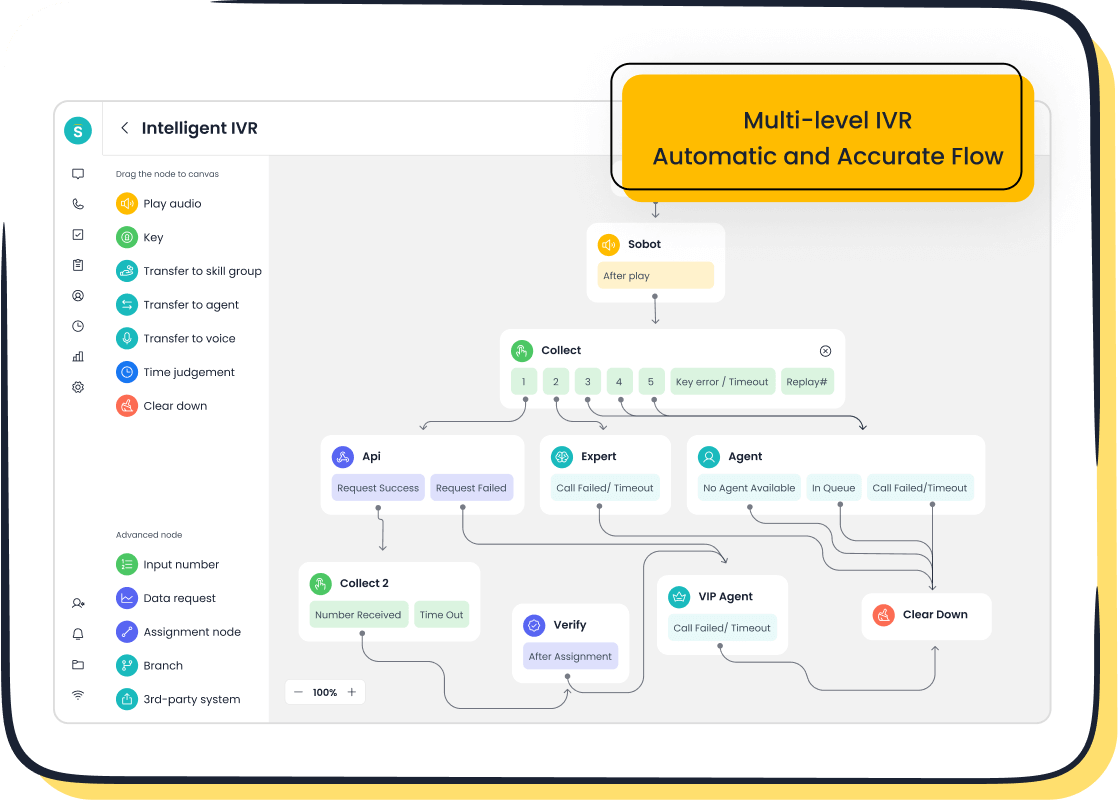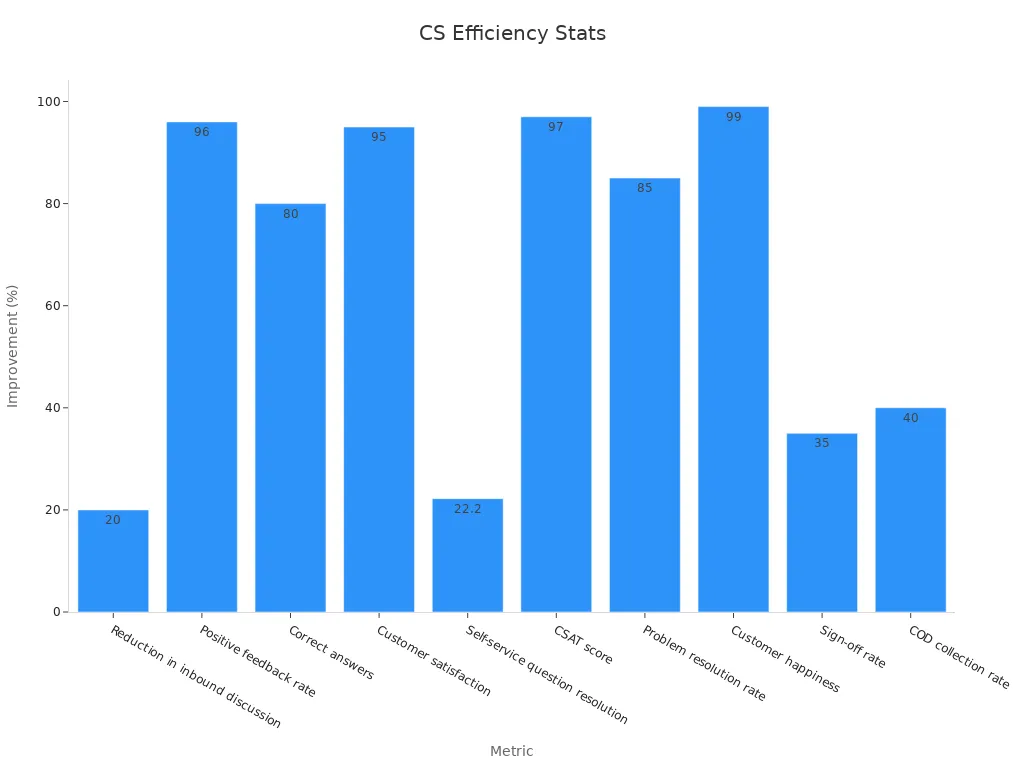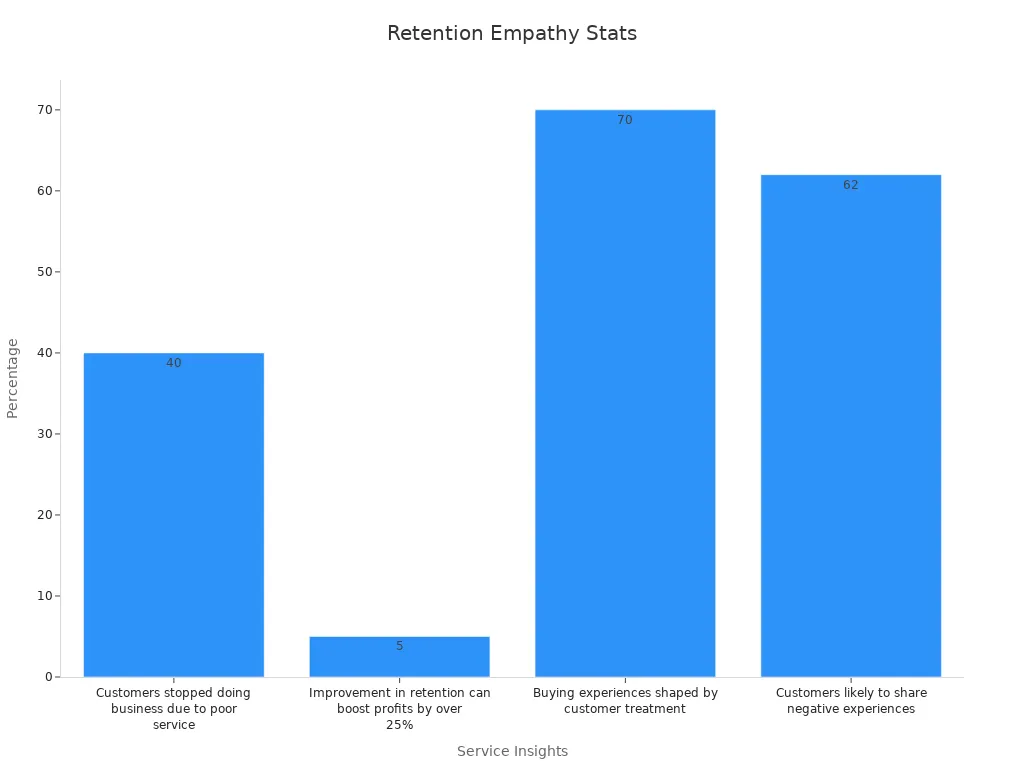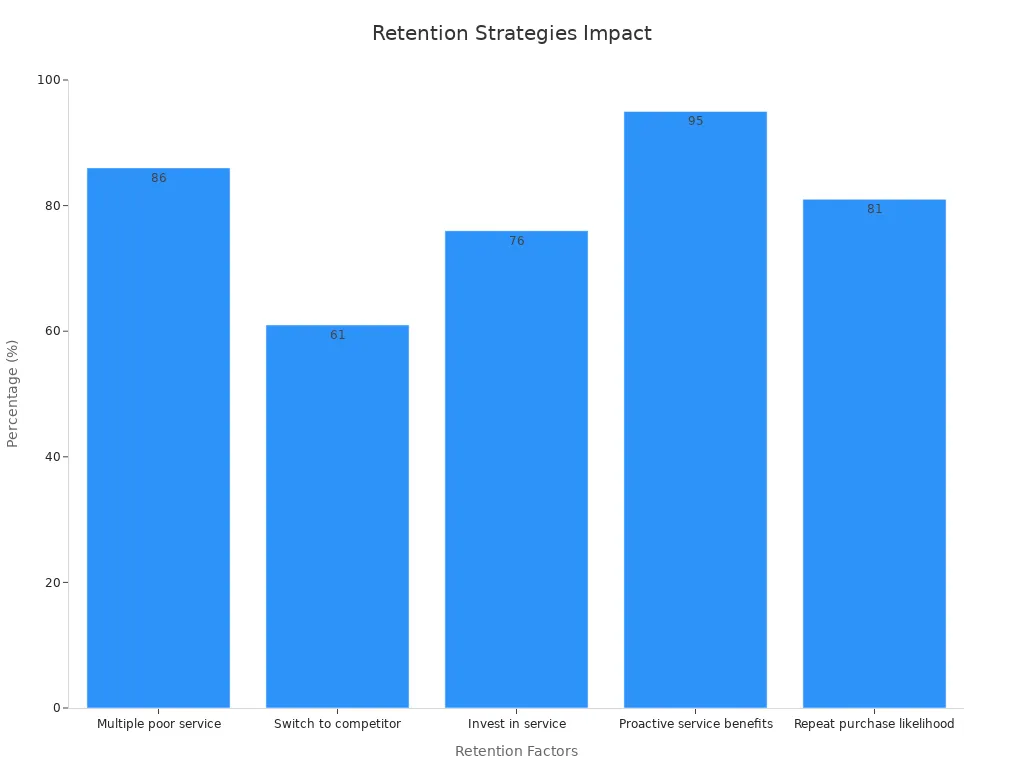How Would You Deal With an Upset Customer

Dealing with an upset customer can feel challenging, but it’s also an opportunity to make a lasting impression. When emotions run high, your response can shape how the customer perceives your brand. Did you know almost 90% of buyers are willing to pay more for exceptional customer experiences? This shows how vital empathy and professionalism are in customer service.
You might wonder, how would you deal with an upset customer effectively? Start by listening carefully and acknowledging their concerns. Research reveals that 64% of U.S. consumers feel companies often lose the human touch in customer interactions. That’s why showing genuine care and offering practical solutions can turn a negative moment into a positive outcome.
Empathy, clear communication, and a problem-solving mindset can transform frustration into trust. Tools like Sobot’s solutions help businesses handle these situations with ease, ensuring customers feel valued every step of the way.
Recognizing and Acknowledging Emotions
Understanding the Customer’s Perspective
When a customer reaches out upset, it’s often because they feel unheard or misunderstood. To truly help, you need to step into their shoes and see the situation from their perspective. Customer perception surveys are a great way to understand how customers view your brand, products, or services. These surveys reveal what they think and feel, helping you tailor your approach to meet their needs. For example, businesses that use these insights often improve customer retention and even attract new leads by addressing pain points effectively.
By understanding their perspective, you can respond in a way that feels personal and genuine. This approach not only resolves the issue but also strengthens the customer experience. Remember, customers want to feel valued, not like just another number in a queue.
The Importance of Active Listening in Customer Service
Active listening is more than just hearing words. It’s about focusing on what the customer is saying and showing them you care. When you practice active listening, you pick up on emotions like frustration or confusion, which helps you respond appropriately. Studies show that acknowledging emotions during interactions can improve Quality Assurance (QA) scores and overall satisfaction.
Here’s how you can practice active listening:
- Maintain eye contact if the interaction is face-to-face.
- Repeat or paraphrase what the customer says to confirm understanding.
- Avoid interrupting, even if you think you know the solution.
Active listening builds trust and shows customers that their concerns matter. Tools like Sobot’s unified workspace make this easier by giving agents access to all customer data in one place, ensuring no detail gets overlooked.
Validating the Customer’s Feelings with Empathy
Empathy is the secret ingredient to turning a negative interaction into a positive one. When you show empathy, you acknowledge the customer’s feelings and let them know their emotions are valid. Research highlights that companies ranking high on the Empathy Index see better performance and higher earnings. Why? Because empathy fosters loyalty.
Simple phrases like “I understand how frustrating this must be for you” can make a world of difference. Effective listening and personalizing the experience further enhance this connection. For instance, Sobot’s AI-powered Voicebot can recognize customer intent and emotions, helping agents respond with empathy and precision.
By validating feelings, you not only resolve the issue but also leave a lasting impression. Customers remember how you made them feel, and that’s what keeps them coming back.
Techniques to Handle Angry Customers

Staying Calm and Composed Under Pressure
When dealing with angry customers, your ability to stay calm can make all the difference. Anger often escalates when emotions clash, so maintaining your composure helps you steer the conversation toward resolution. Take a deep breath, focus on the issue, and avoid taking the customer’s frustration personally. This approach not only keeps you grounded but also reassures the customer that you’re in control.
For example, imagine a customer upset about a delayed delivery. Instead of reacting defensively, acknowledge their frustration and assure them you’re here to help. Tools like Sobot’s AI-powered Voicebot can assist by handling initial inquiries, giving you time to prepare for more complex issues. Staying calm isn’t just about keeping your cool—it’s about creating an environment where conflict resolution becomes possible.
Using De-escalation Language to Diffuse Tension
Words have power, especially when emotions run high. De-escalation techniques rely on language that soothes rather than inflames. Phrases like “I understand how this situation has been frustrating for you” or “Let’s work together to find a solution” can shift the tone of the conversation. These statements show empathy and a willingness to help, which can quickly diffuse tension.
Why is this important? Studies reveal that 78% of customers are likely to abandon a purchase if they experience poor service. Using de-escalation techniques ensures you keep customers engaged and satisfied. Taking ownership of the issue also demonstrates accountability, turning a negative experience into a positive one. Sobot’s unified workspace can support this process by providing agents with all the customer’s information in one place, enabling faster and more personalized responses.
Setting Boundaries Respectfully While Maintaining Professionalism
Sometimes, angry customers may cross the line. Setting boundaries is essential to protect both yourself and the integrity of the interaction. For instance, if a customer uses inappropriate language, calmly explain that while you’re here to help, respectful communication is necessary. This approach keeps the conversation professional without escalating the conflict.
Here are some strategies to set boundaries effectively:
| Strategy | Explanation |
|---|---|
| Addressing Inappropriate Behavior | Handle unacceptable behaviors privately to avoid further negativity. |
| Setting Clear Expectations | Communicate policies and consequences to prevent boundary issues. |
| Monitoring Behavior | Regularly review interactions to ensure compliance with service standards. |
| Providing Support | Offer training to improve customer handling skills. |
| Enforcing Boundaries | Apply consistent actions if inappropriate behavior continues. |
By setting clear boundaries, you create a safe and respectful environment for both you and the customer. Sobot’s monitoring and analysis tools can help track interactions, ensuring compliance with company policies and identifying areas for improvement.
Problem Resolution Steps for Upset Customers
Identifying the Root Cause of the Customer’s Issue
When a customer reaches out with a complaint, identifying the root cause of their issue is the first step toward resolution. Without understanding the underlying problem, any solution you offer might only address the symptoms, leaving the customer dissatisfied. Start by asking open-ended questions to gather as much information as possible. For example, “Can you walk me through what happened?” encourages customers to share details.
Identifying the root cause has proven benefits:
- It increases first call resolution rates, which are critical for customer satisfaction and loyalty.
- It reduces the average resolution time, improving the overall customer experience.
- The industry standard for first call resolution rates is between 75% and 80%, highlighting its importance.
Consider real-world examples. In the IT industry, recurrent server downtimes were traced back to incompatible software updates. By addressing this root cause, companies avoided future disruptions. Tools like Sobot’s unified workspace simplify this process by consolidating customer data, helping you pinpoint issues faster.
Offering Clear and Practical Solutions
Once you’ve identified the problem, offering clear and practical solutions is key. Customers value transparency and actionable steps. Avoid jargon and explain the solution in simple terms. For instance, if a customer faces delays in delivery, you could say, “We’ve expedited your order, and it will arrive by [specific date].”
Here’s how you can ensure your solutions resonate:
- Personalize interactions by remembering customer details.
- Provide after-sales support, like product guides or tutorials.
- Maintain transparency in pricing and shipping to build trust.
- Use centralized platforms like Sobot’s Voice/Call Center to streamline communication and ensure consistency.
Proactively checking in on customers after implementing a solution also shows you care. This approach not only resolves the issue but strengthens the relationship.
Following Up to Ensure Customer Satisfaction
Following up is the final step in resolving customer complaints. It shows you’re committed to their satisfaction and willing to go the extra mile. A simple follow-up email or call can make a big difference. For example, “We wanted to check if the solution we provided worked for you. Is there anything else we can assist with?”
Effective follow-ups also provide valuable insights into customer needs. Here’s how you can approach this:
- Acknowledge responses promptly to show appreciation.
- Take immediate action on critical feedback.
- Close the loop by informing customers about changes made based on their input.
Sobot’s monitoring tools can help you track interactions and identify areas for improvement. By following up, you not only ensure customer satisfaction but also build trust and loyalty.
Leveraging Sobot’s Voice/Call Center for Effective Customer Service
How Sobot’s Intelligent IVR Enhances Customer Interactions

Have you ever called a company and felt frustrated navigating endless menus? Sobot’s Intelligent IVR (Interactive Voice Response) changes that experience. It simplifies customer interactions by offering personalized greetings, intuitive menus, and smart call routing. This means customers get connected to the right agent or department faster, saving time and reducing frustration.
The benefits don’t stop there. Sobot’s IVR system uses a drag-and-drop interface, making it easy for businesses to customize workflows in real time. Whether it’s routing calls based on language preferences or prioritizing VIP customers, the system adapts to your needs. This flexibility ensures smoother communication and happier customers.
The results speak for themselves. Companies using Sobot’s Voice/Call Center have seen a 20% reduction in inbound discussions and a 96%+ positive feedback rate. Here’s a quick look at the impact:
| Metric | Improvement |
|---|---|
| Customer satisfaction | 95% |
| Problem resolution rate | 85% |
| Self-service question resolution | 22.2% |
| Customer happiness | 99% |

With Sobot’s Intelligent IVR, you can create a seamless and efficient customer support experience.
Using Unified Workspace to Manage Customer Data Seamlessly
Managing customer data across multiple platforms can feel overwhelming. Sobot’s Unified Workspace solves this by bringing all customer information into one place. This centralized approach ensures agents have everything they need to provide personalized and efficient customer support.
Here’s why this matters. Imagine a customer calls about an issue they’ve already emailed about. With Sobot’s Unified Workspace, the agent can instantly access the email, call history, and even chat transcripts. This eliminates repetitive explanations and speeds up problem resolution.
The benefits of a unified workspace include:
- Improved data collaboration for faster problem-solving.
- Enhanced data organization, making insights easily accessible.
- Streamlined data analysis for quicker decision-making.
This approach ensures consistent communication and a seamless customer experience. It’s no wonder businesses using Sobot’s Unified Workspace report higher customer satisfaction and loyalty.
Monitoring and Analyzing Call Data for Continuous Improvement
How do you know if your customer service is improving? Monitoring and analyzing call data is the key. Sobot’s Voice/Call Center offers advanced tools to track performance and identify areas for growth. By using control charts and statistical methods, you can spot trends, detect issues, and maintain quality standards.
For example, descriptive statistics summarize call data, helping you understand patterns like peak call times. Pareto analysis identifies the most common customer complaints, allowing you to address them proactively. These insights lead to better resource allocation and improved customer support.
Here’s how Sobot’s tools help:
- Control charts track key performance indicators (KPIs).
- Statistical process control ensures adherence to quality standards.
- Real-time monitoring detects deviations and enables quick adjustments.
By leveraging these analytics, you can continuously refine your processes and deliver exceptional customer service.
Maintaining Professionalism in Customer Service
Staying Composed During Difficult Interactions
Staying calm during tough conversations is a skill that can transform the outcome of any interaction. When a customer is upset, your ability to remain composed reassures them that their concerns are being taken seriously. Mental preparation plays a big role here. Before engaging with a frustrated customer, take a moment to collect your thoughts. This helps you manage your emotions and focus on resolving the issue.
Empathy is another key factor. When you understand the customer’s frustration, you can respond in a way that feels genuine and supportive. For example, if a customer is upset about a billing error, acknowledging their inconvenience and offering a clear solution can quickly de-escalate the situation. Self-care practices, like taking short breaks between calls, also help you maintain your calmness, which positively impacts your interactions.
Teamwork can also make a difference. Discussing challenging cases with colleagues often provides fresh insights and support. Tools like Sobot’s Unified Workspace simplify this process by giving you access to all customer data in one place, making it easier to stay composed and focused on solutions.
Knowing When to Escalate the Issue to Supervisors
Sometimes, resolving a customer’s issue requires more authority or expertise than you have. Knowing when to escalate a problem is crucial for maintaining professionalism and ensuring the customer gets the help they need. Here are some scenarios where escalation is necessary:
- The issue is beyond your authority or expertise.
- The customer becomes increasingly frustrated or upset.
- A service-level agreement (SLA) deadline is at risk.
- A widespread technical issue affects multiple customers.
For instance, if a customer reports a recurring technical glitch that you can’t resolve, escalating it to a supervisor ensures the problem gets addressed promptly. This not only improves the customer’s experience but also demonstrates your commitment to finding the best solution. Sobot’s monitoring tools can help track these escalations, ensuring they’re handled efficiently and professionally.
Learning from Challenging Customer Experiences
Every challenging interaction is an opportunity to grow. By reflecting on these experiences, you can identify areas for improvement and enhance your communication skills. Case studies show that organizations that invest in advanced support technologies and comprehensive training programs often see significant improvements in customer satisfaction.
For example, a professional services firm once developed a business simulation to train employees on leadership and service skills. This approach helped them deliver exceptional customer service and fostered a culture of continuous learning. Similarly, analyzing past interactions using tools like Sobot’s Voice/Call Center can provide valuable insights. You can identify patterns, understand what worked well, and apply those lessons to future interactions.
Learning from these experiences not only improves your skills but also strengthens your ability to handle difficult situations with confidence and professionalism.
Building Long-Term Customer Relationships

Turning Negative Experiences into Positive Outcomes
Negative experiences don’t have to end on a sour note. In fact, they can become opportunities to build stronger connections with your customers. When you resolve an issue effectively, you show that you care about their concerns. This can turn frustration into trust and even loyalty. Did you know that poor customer experiences cost businesses up to $1.6 trillion annually as consumers switch to competitors? But companies that focus on improving customer experience often see long-term loyalty and revenue growth.
Here’s how you can turn things around:
- Listen actively to understand the root cause of the problem.
- Offer a solution that’s clear and actionable.
- Follow up to ensure the customer feels valued.
For example, Sobot’s Voice/Call Center helps you track and analyze interactions, making it easier to identify recurring issues and address them proactively. This approach not only resolves the immediate concern but also strengthens your relationship with the customer.
The Role of Empathy in Customer Retention
Empathy is more than just a buzzword—it’s a game-changer in customer service. When you show genuine care, you create emotional connections that keep customers coming back. Research shows that 70% of buying experiences are influenced by how customers feel they’re treated. On the flip side, 40% of customers stop doing business with a company due to poor service.
Here’s why empathy matters:
- It fosters trust, which is the foundation of customer loyalty.
- It helps you understand and meet customer needs more effectively.
- It turns one-time buyers into lifelong advocates.
Sobot’s AI-powered Voicebot can even detect customer emotions, helping your team respond with empathy and precision. By prioritizing emotional connections, you not only retain customers but also enhance your brand’s reputation.

Continuous Improvement in Customer Service Skills
Great customer service doesn’t happen by accident. It requires continuous learning and adaptation. Metrics like Customer Satisfaction Score (CSAT) and Net Promoter Score (NPS) can help you identify areas for improvement. For instance, a high First Response Time (FRT) indicates that your team is quick to address inquiries, which boosts satisfaction.
Here’s how you can improve:
- Monitor trends in customer feedback to spot patterns.
- Train your team regularly to enhance their skills.
- Use tools like Sobot’s Unified Workspace to streamline workflows and reduce response times.
| Metric | Description | Key Benefit |
|---|---|---|
| Customer Satisfaction Score (CSAT) | Measures customer satisfaction with a service or product | High effectiveness in gauging immediate feedback |
| Net Promoter Score (NPS) | Assesses customer loyalty and likelihood to recommend | Growth prediction for future business |
| First Response Time (FRT) | Time taken to respond to customer inquiries | Boosts customer satisfaction through quick responses |
By focusing on these metrics and continuously refining your approach, you can deliver exceptional service that keeps customers coming back.
Handling upset customers effectively requires a mix of empathy, de-escalation, problem-solving, and professionalism. These strategies not only resolve issues but also foster trust and loyalty. For instance, 76% of businesses that invest in customer service report higher retention rates, while 81% of customers are more likely to make repeat purchases after a positive experience.
Tools like Sobot’s Voice/Call Center make this process seamless. Features like Intelligent IVR and Unified Workspace help agents address concerns quickly and efficiently. According to Gartner, 82% of customers are more likely to return when they perceive real value during service interactions. By leveraging such tools, you can transform negative moments into opportunities to strengthen relationships.

Remember, every interaction is a chance to show customers they matter. When you prioritize their needs, you build lasting connections that drive long-term success.
FAQ
What should you do if a customer refuses to calm down?
Stay calm and listen actively. Acknowledge their frustration and offer a solution. If the situation escalates, politely inform them that you’ll escalate the issue to a supervisor. Tools like Sobot’s Voice/Call Center can help by routing calls to the right person quickly.
How can you ensure customers feel heard during a call?
Focus on active listening. Repeat or paraphrase their concerns to confirm understanding. Use empathetic phrases like, “I understand how this feels.” Sobot’s Unified Workspace helps by providing all customer data in one place, so you can address their concerns more effectively.
What’s the best way to follow up with a customer after resolving their issue?
Send a quick email or make a call to check if the solution worked. For example, say, “We wanted to ensure everything is resolved. Is there anything else we can assist with?” Following up shows you care and builds trust.
How can technology improve customer interactions?
Technology like Sobot’s Intelligent IVR simplifies interactions by routing calls efficiently. It reduces wait times and connects customers to the right agent. This ensures smoother communication and higher satisfaction rates.
Why is empathy important in customer service?
Empathy builds trust and loyalty. When you acknowledge a customer’s feelings, they feel valued. For instance, saying, “I understand how frustrating this must be,” can turn a negative experience into a positive one. Empathy fosters long-term relationships.
See Also
Enhancing Customer Satisfaction Through Effective Live Chat Strategies
Essential Practices for Effective Call Center Quality Management
Fast Strategies for Achieving Success in Depop Live Chat